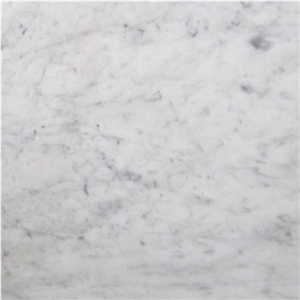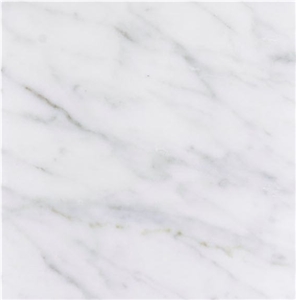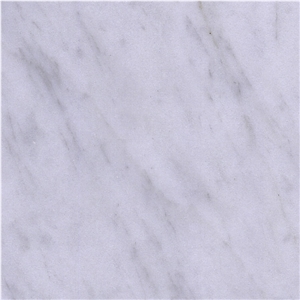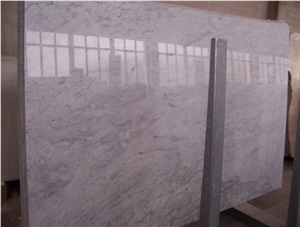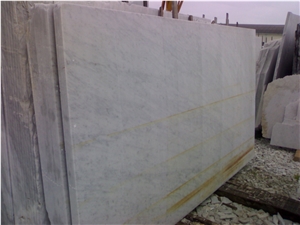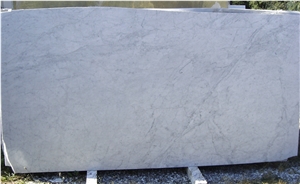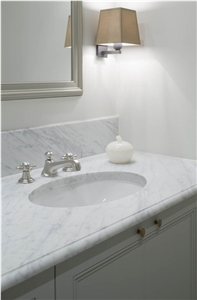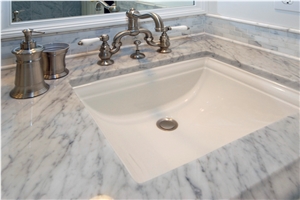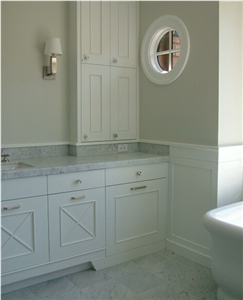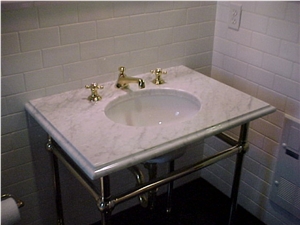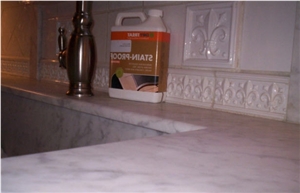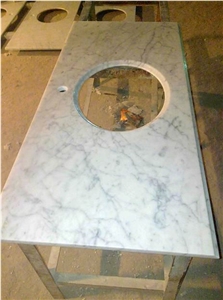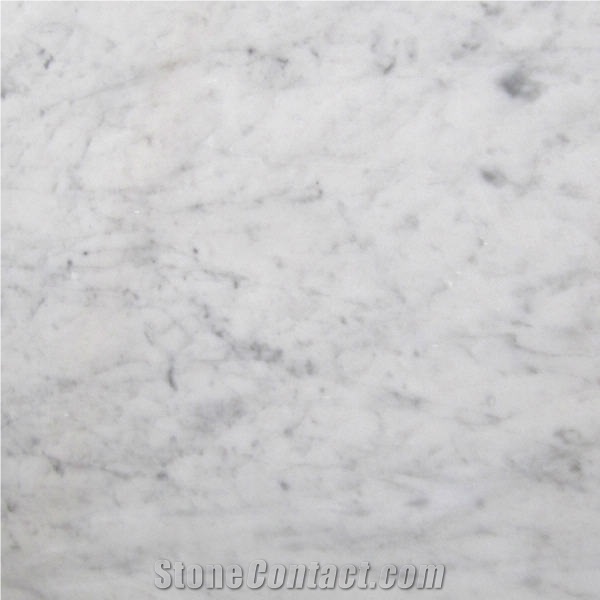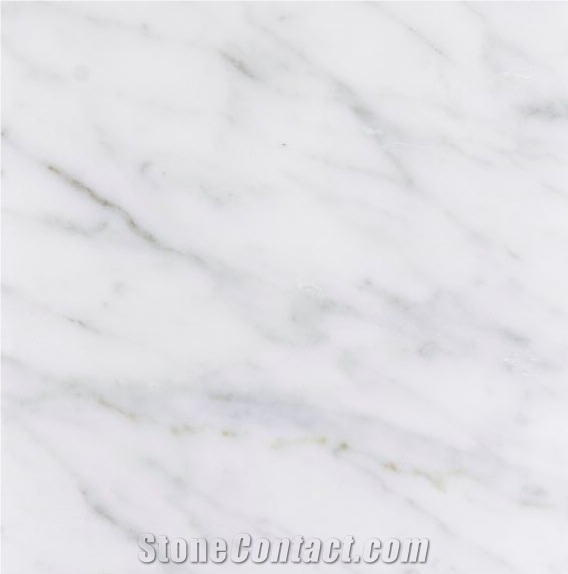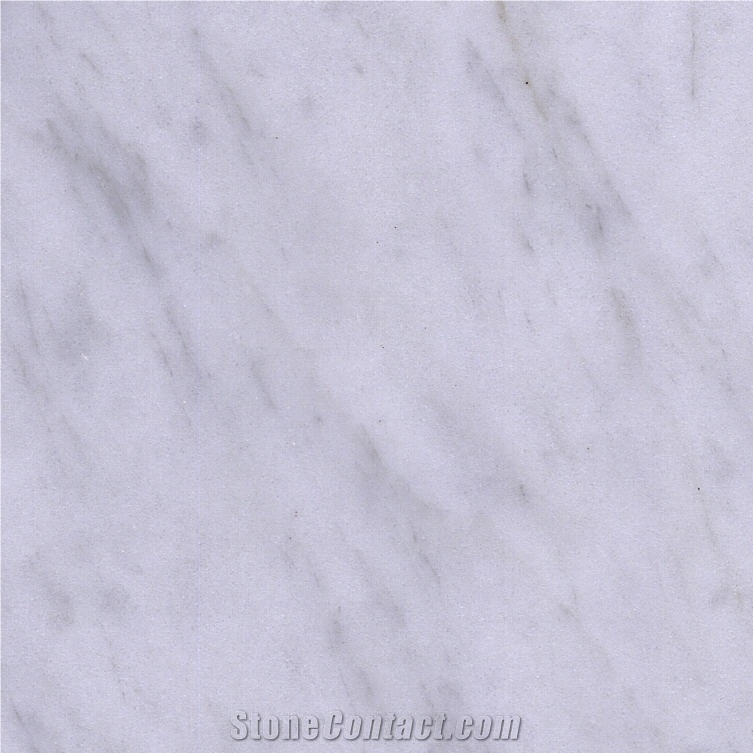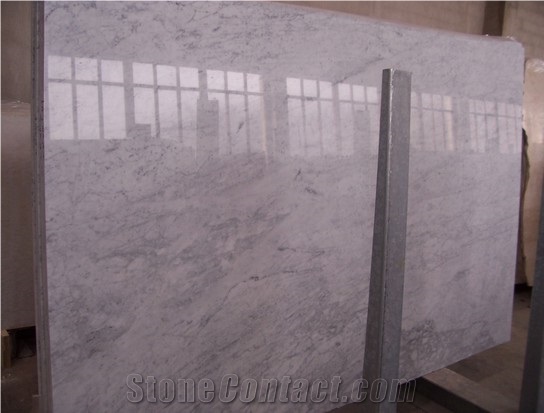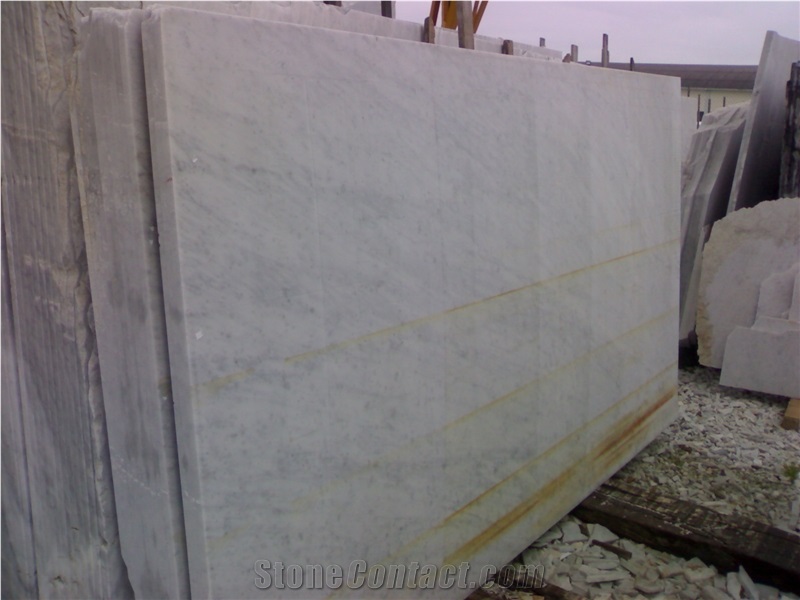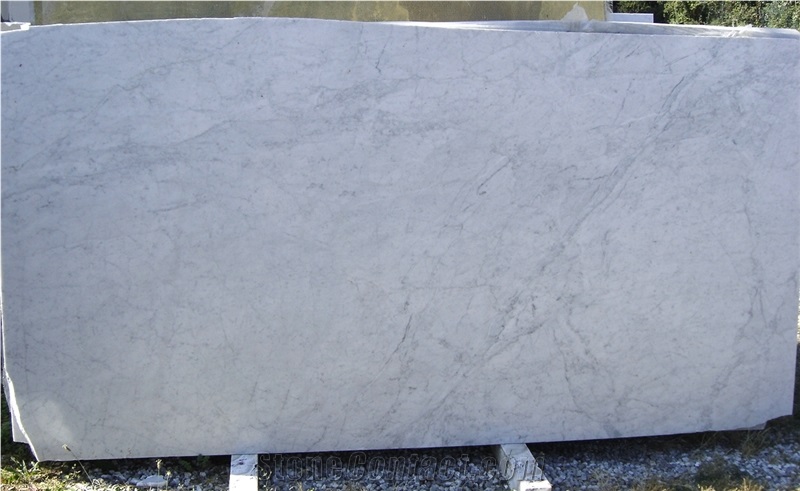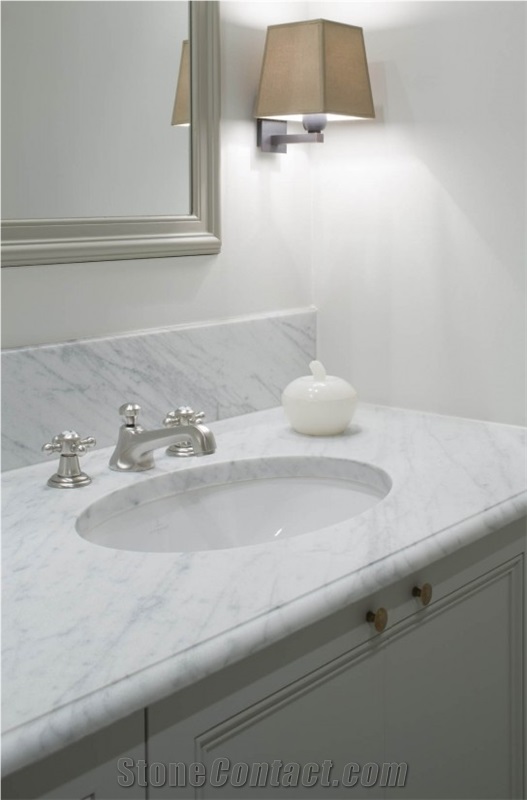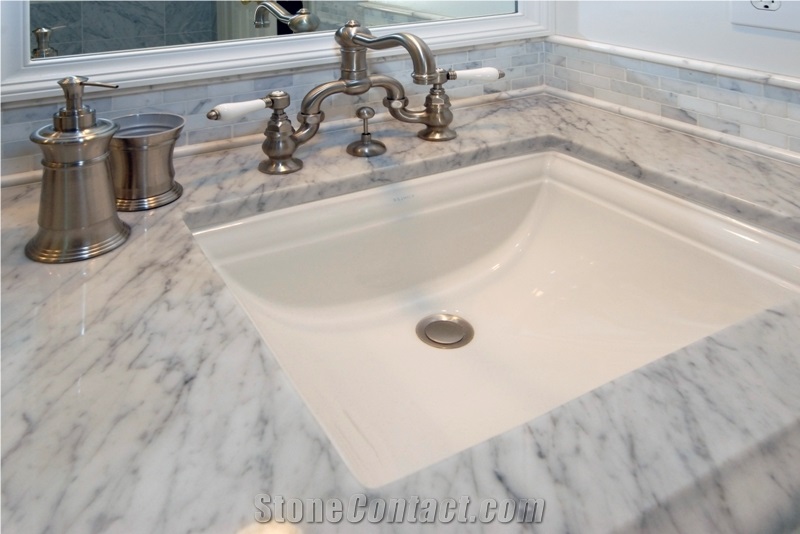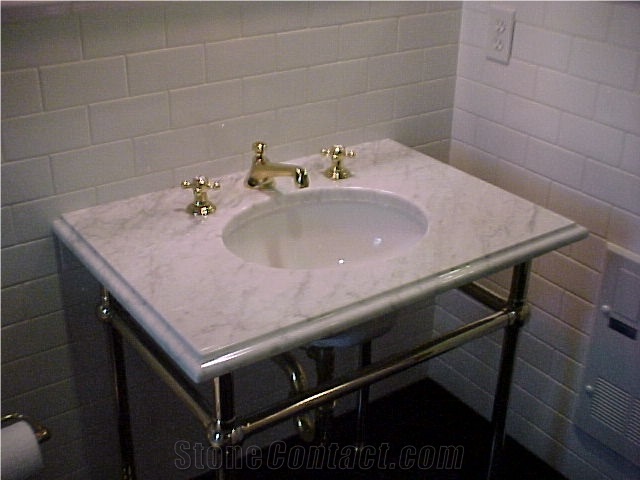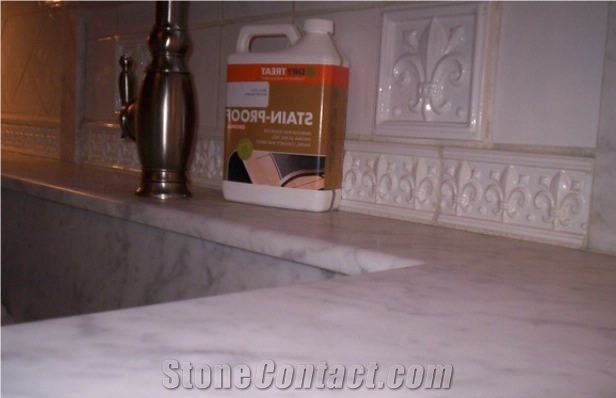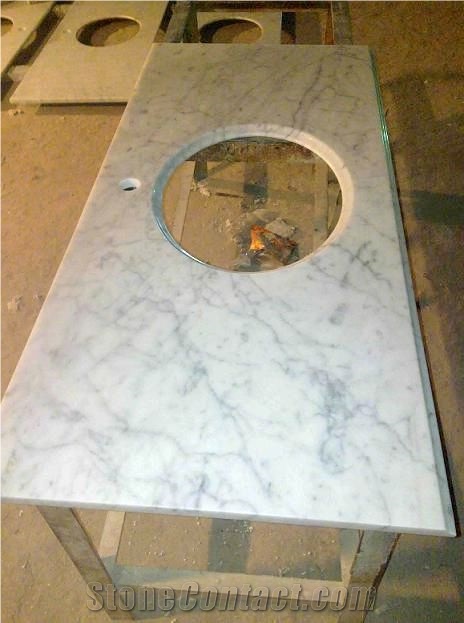Bianco Carrara D
 Italy
(Carrara, Provincia di Massa Carrara, Toscana )
Italy
(Carrara, Provincia di Massa Carrara, Toscana )
Petrographic definition: Marble
Massa Unit Volume: 2720 kg/m3
Water Absorption: 0.10 %
Breaking Load Compression Simple: 126 MPa
Compression breaking load after freezing: 125 MPa
Tangent elastic modulus: 62,400 MPa
Tensile Strength through indirect Flex: 19.8 MPa
Its coefficient of Abrasion (referred to Granite St. Fedelino): 0.56
Impact resistance: minimum fall height: 75 cm
Linear thermal expansion coefficient of 3.7 x 10-5 0C-1
Knoop microhardness: 1393 MPa
Index unevenness of hardness: 1.27
Source: Università di Pisa - Politecnico di Torino

Are there different quality levels of Bianco Carrara D?

How thick is Italy's Bianco Carrara D Marble slabs?

Is Italy's Bianco Carrara D Marble an expensive stone?

Can Italy's Bianco Carrara D Marble be used in a dining room?

Can Italy's Bianco Carrara D Marble be used exterior applications in very rainy climates?

What grade is Italy's Bianco Carrara D Marble?

Are there color variations of Italy's Bianco Carrara D Marble?

Can Italy's Bianco Carrara D Marble be used in landscaping?

Can Bianco Carrara D be used as a fireplace?

Can you put a hot pan on Bianco Carrara D?

What is the coefficient of friction of Leathered Italy's Bianco Carrara D Marble tiles?

What is the difference between Bianco Carrara D and Calacatta Arni?

Can Italy's Bianco Carrara D Marble be used outdoors?

What is the difference between Bianco Carrara D and Thassos Red Lines?

Why is Bianco Carrara D so expensive?
-

 Italy
Italy
 12YRDiamond members are premium members on platform, providing members with comprehensive approach to promoting their products, increasing products exposure and investment return to maximize.
12YRDiamond members are premium members on platform, providing members with comprehensive approach to promoting their products, increasing products exposure and investment return to maximize.
 Verified Supplier is for prove company authenticity,including business license,trade license and effective office space,to enhance buyers' trust to suppliers and their products, reducing communication costs.
Verified Supplier is for prove company authenticity,including business license,trade license and effective office space,to enhance buyers' trust to suppliers and their products, reducing communication costs.
Contact Supplier
-

Goldtop ( Xiamen ) Imp. & Exp. Co., Ltd.
 China
China
 8YRDiamond members are premium members on platform, providing members with comprehensive approach to promoting their products, increasing products exposure and investment return to maximize.
8YRDiamond members are premium members on platform, providing members with comprehensive approach to promoting their products, increasing products exposure and investment return to maximize.
 Verified Supplier is for prove company authenticity,including business license,trade license and effective office space,to enhance buyers' trust to suppliers and their products, reducing communication costs.
Verified Supplier is for prove company authenticity,including business license,trade license and effective office space,to enhance buyers' trust to suppliers and their products, reducing communication costs.
Contact Supplier
-

Goldtop ( Xiamen ) Imp. & Exp. Co., Ltd.
 China
China
 8YRDiamond members are premium members on platform, providing members with comprehensive approach to promoting their products, increasing products exposure and investment return to maximize.
8YRDiamond members are premium members on platform, providing members with comprehensive approach to promoting their products, increasing products exposure and investment return to maximize.
 Verified Supplier is for prove company authenticity,including business license,trade license and effective office space,to enhance buyers' trust to suppliers and their products, reducing communication costs.
Verified Supplier is for prove company authenticity,including business license,trade license and effective office space,to enhance buyers' trust to suppliers and their products, reducing communication costs.
Contact Supplier
-

XIAMEN XINRUNLONG STONE CO.,LTD
 China
China
 6YRDiamond members are premium members on platform, providing members with comprehensive approach to promoting their products, increasing products exposure and investment return to maximize.
6YRDiamond members are premium members on platform, providing members with comprehensive approach to promoting their products, increasing products exposure and investment return to maximize.
 Verified Supplier is for prove company authenticity,including business license,trade license and effective office space,to enhance buyers' trust to suppliers and their products, reducing communication costs.
Verified Supplier is for prove company authenticity,including business license,trade license and effective office space,to enhance buyers' trust to suppliers and their products, reducing communication costs.
Contact Supplier
-

 Slovenia
Slovenia
Contact Supplier
-

 China
China
 16YRDiamond members are premium members on platform, providing members with comprehensive approach to promoting their products, increasing products exposure and investment return to maximize.
16YRDiamond members are premium members on platform, providing members with comprehensive approach to promoting their products, increasing products exposure and investment return to maximize.
 Verified Supplier is for prove company authenticity,including business license,trade license and effective office space,to enhance buyers' trust to suppliers and their products, reducing communication costs.
Verified Supplier is for prove company authenticity,including business license,trade license and effective office space,to enhance buyers' trust to suppliers and their products, reducing communication costs.
Contact Supplier
-

Yuceler Marble Tile and Machine
 Turkey
Turkey
 6YRDiamond members are premium members on platform, providing members with comprehensive approach to promoting their products, increasing products exposure and investment return to maximize.
6YRDiamond members are premium members on platform, providing members with comprehensive approach to promoting their products, increasing products exposure and investment return to maximize.
 Verified Supplier is for prove company authenticity,including business license,trade license and effective office space,to enhance buyers' trust to suppliers and their products, reducing communication costs.
Verified Supplier is for prove company authenticity,including business license,trade license and effective office space,to enhance buyers' trust to suppliers and their products, reducing communication costs.
Contact Supplier
-

 Ukraine
Ukraine
 6YRDiamond members are premium members on platform, providing members with comprehensive approach to promoting their products, increasing products exposure and investment return to maximize.
6YRDiamond members are premium members on platform, providing members with comprehensive approach to promoting their products, increasing products exposure and investment return to maximize.
Contact Supplier
-

-

The request includes: 1. surface finished, size 2. quantity required






